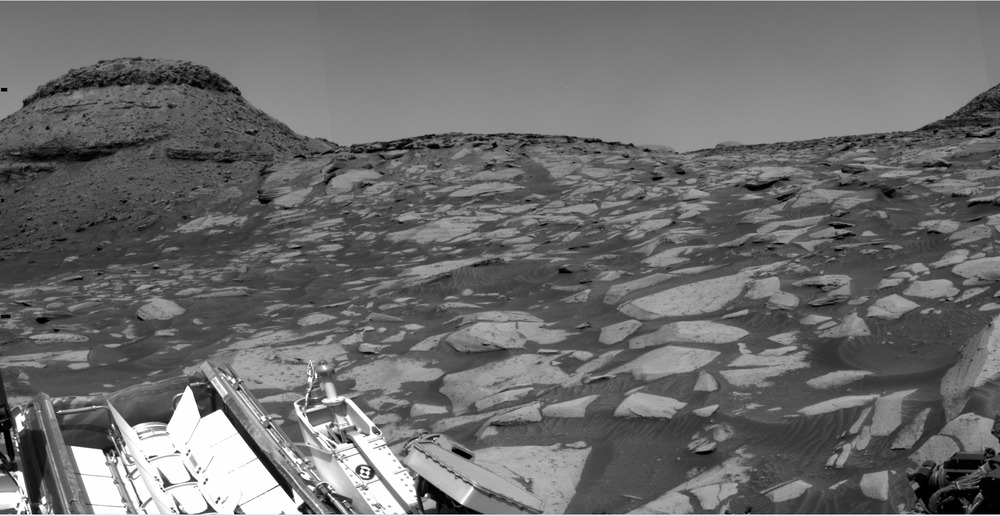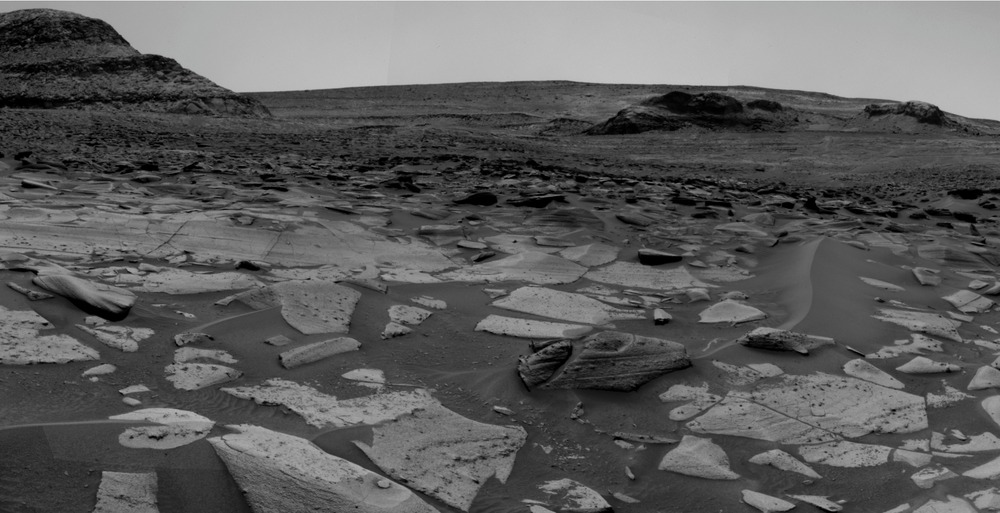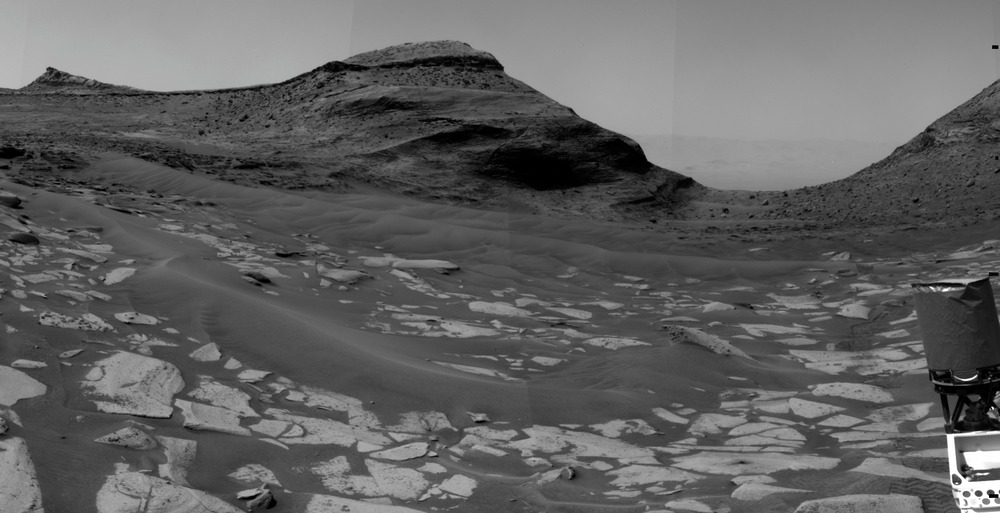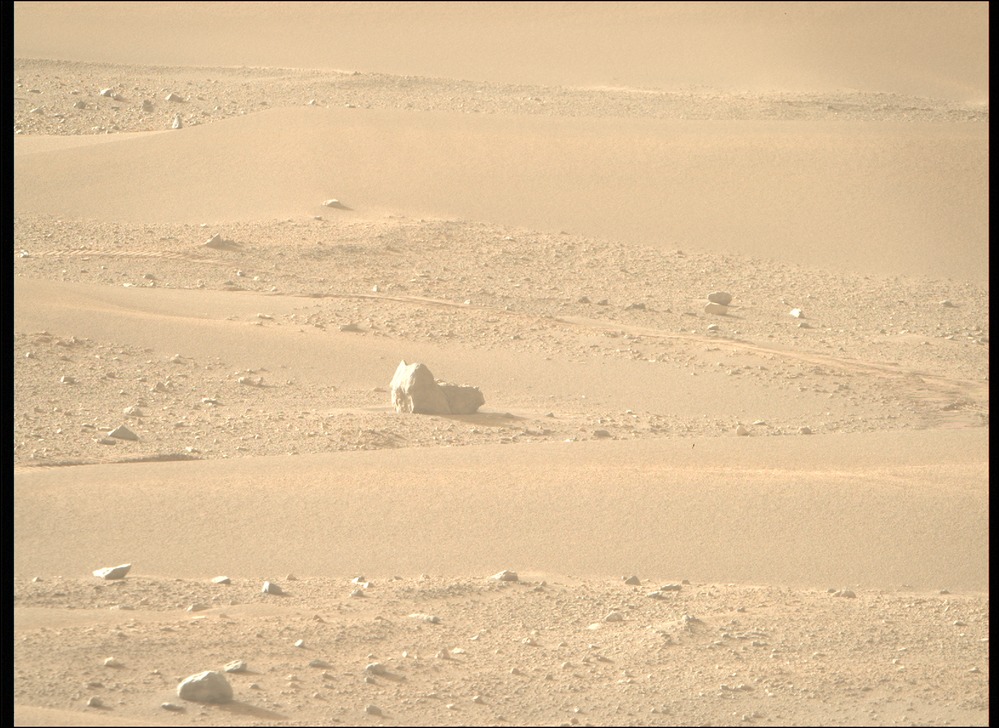NASA’s Curiosity rover found itself in a very sci-fi landscape at the end of last month, in the Marker Band valley.
>After a successful 13 meter weekend drive, Curiosity finds itself in the middle of “Marker Band” valley. The underlaying bedrock has changed dramatically over the last week, from dark and nodular to light-toned and relatively smooth. This area has been of interest to the science team since Gale crater was first selected as the landing site, 10 years in the making! The orbital mineralogical information suggests the presence of Mg-sulfate bearing rocks in this area.
https://mars.nasa.gov/msl/mission-updates/9255/sols-3578-3579-a-whole-new-world/




